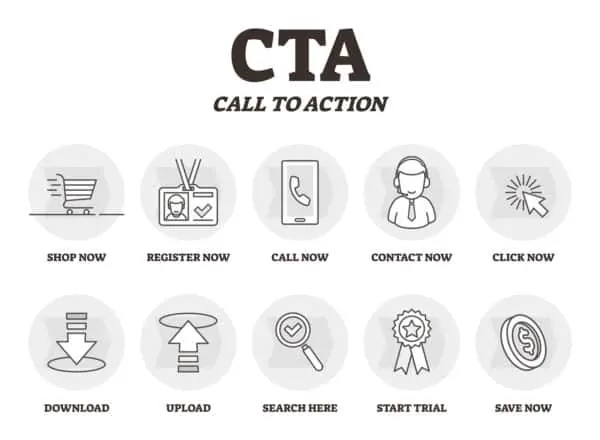The exact strategy that you use to optimize your PPC advertising account and make it a success will depend on the type of niche that you’re in. So, creating a food marketing PPC strategy will be very different from creating a PPC marketing strategy for a waste disposal company or a cosmetic surgery clinic, for example. Similarly, a B2B PPC account has many different considerations than a B2C PPC account. However, one thing remains the same across all PPC accounts — the importance of creating great PPC ad copy! In this blog, we will run through why it is important to optimize your PPC ads and how to do ad copy analysis. We’ll also give you twelve top tips that you can try to improve your PPC ad copy and create ads that succeed.
Table of Contents
Why is it important to create great PPC ad copy?
Having a strong PPC ad copy can benefit your business in more ways than you might think. Here are four reasons why you shouldn’t neglect your PPC ad copy:
It creates a good first impression – The ad copy is the first thing about your business that your customer will see. A good first impression impacts how the customer perceives the business. This can result in them being more likely to fill in a form or make a purchase on your site.
It increases traffic
How does quality PPC ad copy increase traffic? Simple. If the customer doesn’t like what they see, then they probably won’t click the ad. That means fewer people will be landing on your website. If we assume that the traffic that you’re targeting is profitable, then that means you’re getting fewer profitable clicks to your site.
To put it simply, an increase in profitable clicks to the site increases profit.
It improves the quality of traffic
The purpose of a good PPC ad isn’t just to increase traffic. It is also to deter the wrong kind of traffic.
You should bear in mind that with PPC advertising, you pay for each click. The more people that click your ad, the more you pay. Therefore, in an ideal world, all of the clicks that you get should ideally become a sale or a lead.
Of course, we don’t live in an ideal world, which means the best we can do is to take steps to try to get the most relevant traffic possible.
If you include messages in your ad copy that don’t reflect your business or what is on your landing page, then you may win the click, but the chances of the user completing a conversion action on your site are low.
For example, if you sell premium-priced products on your site, then by adding ‘cheap’ in your ad copy, you may increase your clickthrough rate but the chances of securing a successful sale are low.
This is because you’re attracting the wrong audience. Similarly, there is no point in mentioning that you have a ‘75% off clearance sale’ in your ad copy when you don’t have a sale on your site. This is because people are going to bounce off your page as soon as they find out that there is no sale happening.
Higher Quality Scores
Google Ads Quality Score is a score from 1 – 10 that Google assigns each of your keywords. The higher your Quality Scores, the less you pay for a click. Seeing as though your clickthrough rate is a metric used to calculate your Quality Scores, it makes sense to work on optimizing your clickthrough rate.
Writing good PPC ad copy makes it more compelling to the user, which in turn improves your clickthrough rate and your Quality Scores.
How do I start optimizing my ad copy?
The first step is to create multiple ad copies for each ad group in your PPC account. Google Ads will then split test these ads by showing one ad some of the time and another ad at other times.
The number of ads that you split test will depend on how large your budget is but, in general, we recommend testing three different ads at the same time.
Once you have enough data you can take a look at the performance of your ad copy and pause the poorest-performing ad. You can then add another ad copy and run the test again. By doing this process repeatedly, you will start to find the messaging that best resonates with your customers.
What calculations can I use to decide which ad copy is better?
You should start by downloading the ad copy data into Excel and grouping the ad copy message data. You can then use various metrics to decide which ad copy to pause.
There are various metrics that people use to decide on the best and worst-performing ad copy. Some of these are below:
- Clickthrough rate (CTR) = Clicks / Impressions = The percentage of impressions that resulted in a click
- Conversion rate (CVR) = Conversions / Clicks = The percentage of clicks that resulted in a conversion
- Cost per Acquisition (CPA) = Cost / Conversion = The average cost of a conversion
- Impression to Conversion = Impressions / Conversions = The percentage of impressions that resulted in a conversion
A basic starting point is to look at the CTR of your ad copy. If a lot of people are seeing your ad and not clicking, then this shows that the ad message isn’t catching the user’s eye or compelling them to click.
Improving the CTR of your ads will help to improve your Quality Scores. This means that focusing on optimizing this metric should lead to you getting more clicks at a cheaper click price.
However, it is important not to only focus on CTR. This is because an ad may be catching the user’s eye and enticing them to click your ad for the wrong reasons.
If this is the case, then you’re going to win the click (and pay for it), but the likelihood of you getting a sale or lead from the click is low.
Another metric to layer on top of CTR when analyzing your ad copy is CVR. A high CTR but low CVR could mean that you’re bringing in a lot of traffic but the cost of the extra clicks that you get is eating into your profits.
Two good metrics to look at when doing ad copy analysis is to look at the CPA and impression of the conversion of each ad. This is because these metrics combine multiple data points to give you a clearer perspective on which ad is better.
The CPA metric will show you which ad gets leads or sales at the lowest cost. The impression-to-conversion metric will show which ad would have gotten the greatest number of conversions had we given each ad the same number of impressions.
Here is an example of how you could group your ad copy data:
12 tips on writing amazing PPC ad copy
Now that you know the importance of optimizing PPC ad copy and how to do ad copy analysis, it’s time to start thinking about what to include within the copy itself.
1 – Take inspiration from competitor’s ads
Look at your competitors’ PPC ads to get an idea of the kind of messaging that they’re testing. There may be some inspiration that you can take from them. It may also help you to counteract their ads.
For example, if they mention how much they charge for their product and you’re cheaper, then it makes sense to try adding your price to your PPC ad copy.
2 – Address your audience
Try talking to your audience by addressing them directly. Use words like ‘you’ and ‘your’. This will make your ad feel more personable.
3 – Ask a question
We’ve found that asking a question in PPC ads can often work well and is worth testing. For example, if you offer ‘wholesale food supplies’ and someone searches for this, then you could add ‘Looking for Wholesale Food Supplies?’ in the ad copy.
Asking a question in PPC ads often catches people’s attention. This is because it makes them stop and think for a second about what their answer to your question might be.
4 – Include figures and statistics
Incorporating figures and statistics into PPC ads can be a very powerful tactic to build credibility. It is a quick and concise way to showcase why you’re better than the competition. This is particularly important in a PPC ad, where you have a very limited number of characters to sell yourself.
Here are some examples of facts and figures that you could try:
- 90% success rate
- Recommended by 9 out of 10 customers
- Improve Efficiency by 75%
- Save £250
- 1,250 Products Stocked
- 5,000 Happy Customers
5 – Use countdown timers
Countdown timers can be used in those PPC ads that mention the amount of time remaining before something ends.
We have found that countdown timers are a great way to add urgency and help improve the CTR and CVR of your ads.
For example, if you have a sale running that ends in two days, then you can add a countdown timer in your ads that highlights how much time is remaining before the sale ends.
The first tip for using countdown timers that we have for you is not to use them if your offer still has a long time left. Countdown timers work by creating urgency and no urgency is going to be created if your countdown timer ends in four weeks.
The second tip is to also add a countdown timer to your landing page to create a consistent user journey. This will require development resources as it is not currently offered by Google Ads.
5 – Put your best messaging in the headlines
The headline of your ad is larger, with blue-coloured text. This is the most prominent part of your ad. It is common for users to only read this part of the ad when deciding on whether to click on it or not.
It is therefore important to put your best messaging in the headline; if you put your best messaging in the description lines, then it may not even get read by the user.
6 – Include keywords where possible
Adding your keywords to the ad copy can result in a higher CTR. If the user searches for your keyword and then the ad copy includes that keyword, the user is more likely to think that your ad matches their requirements.
Another benefit of adding the keywords into your PPC ad copy is that doing so can help to improve your Ad Relevance.
Ad Relevance is another metric used to calculate your Quality Score. It looks at how well your ad copy matches the keyword. Therefore, by adding the keyword to the ad copy you can improve your Ad Relevance.
However, keywords mustn’t be added to a point where the ad copy no longer makes sense or appears poorly written.
7 – Ensure consistency of messaging between ad copy and landing page
To convert a successful click into a sale or lead, it is important that any messaging used in your PPC ad is also present somewhere on your landing page.
For example, if your PPC ad mentions that you offer tailored food solutions, then it will help to improve your conversion rate if the landing page that the user sees also mentions this.
This is because the specific messaging on the PPC ad is what attracted the user to click your ad. If it is not on the landing page, then they may click back and continue searching on Google.
8 – Utilise ad extensions
Utilize all ad extensions that are relevant to your business. As a minimum, you should be using Sitelinks, Callouts and Structured Snippets.
However, there are a lot more ad extensions that you can use also.
Ad extensions give you extra space to shout about your business. They also take up space which not only makes your ad appear larger; it also pushes the competitor ads below yours further down the page.
9 – Try Dynamic Keyword Insertion
This is one suggestion that I don’t recommend too often. However, it may be worth testing on some PPC accounts.
Dynamic Keyword Insertion is a feature available on Google Ads that adds the keyword that was triggered into the ad copy.
For example, if your keyword ‘foodservice supplies’ is triggered by a user’s search, then Dynamic Keyword Insertion will add ‘foodservice supplies’ to your PPC ad copy. This can help to improve your CTR.
In addition to this, it can also improve your Ad Relevance since it adds your keywords to the ad copy.
10 – Include USPs
All businesses will have, at one point, had to think about their Unique Selling Proposition and what makes them different or better than the competition.
You can include these in your PPC ads to stand out from your competitors.
For example, do you have multiple years of experience in your field? Do you have a larger food product range than most competitors? Do you offer free delivery where the competitors in your niche don’t?
11 – Use a location feed
Google Ads has a feature that allows you to add the location of the user in the ad copy. This results in ad copy messaging that is tailored to the user’s location.
This is especially beneficial for businesses that are using PPC advertising to bring customers to their local stores.
So, for example, if a user is searching from Leeds and you have a store in Leeds, your ad copy messaging can include ‘Come Visit Our Local Branch in Leeds’. If the user is based in Manchester, the ad copy can be tailored to say, ‘Visit Our Local Branch just 1 Hour from ManchesterourHou’ instead.
Ads tailored to the user’s location can help to personalize your ads to the specific user and yield a strong CTR.
To find out how to create a location feed in Google Ads, take a look at Google’s feeds and business data page here.
12 – Call to action
Include a call to action in your PPC ad copy that tells customers what to do when they land on your page.
A call to action can be very powerful because it can tell a user what they can expect or what they would get if they clicked on your ad.
Here are some examples of calls to action:
- Listen Now
- Apply Now
- Get Started
- Watch More
- Subscribe Now
- Try for Free
- Download Free E-Book
- Get a Free Quote
PPC ad copy is an integral part of any PPC account and therefore optimizing it can yield vast improvements in general performance.

Wrapping up
A little creativity combined with the twelve ad copy optimization tips mentioned in this blog can go a long way to helping you to successfully optimize your PPC ad copy. The key is to always be testing new ad copy messaging and then analyzing the results. By doing so, you should be able to improve the CTR and CVR of your ads as well as improve your Quality Scores to bring down click prices.








